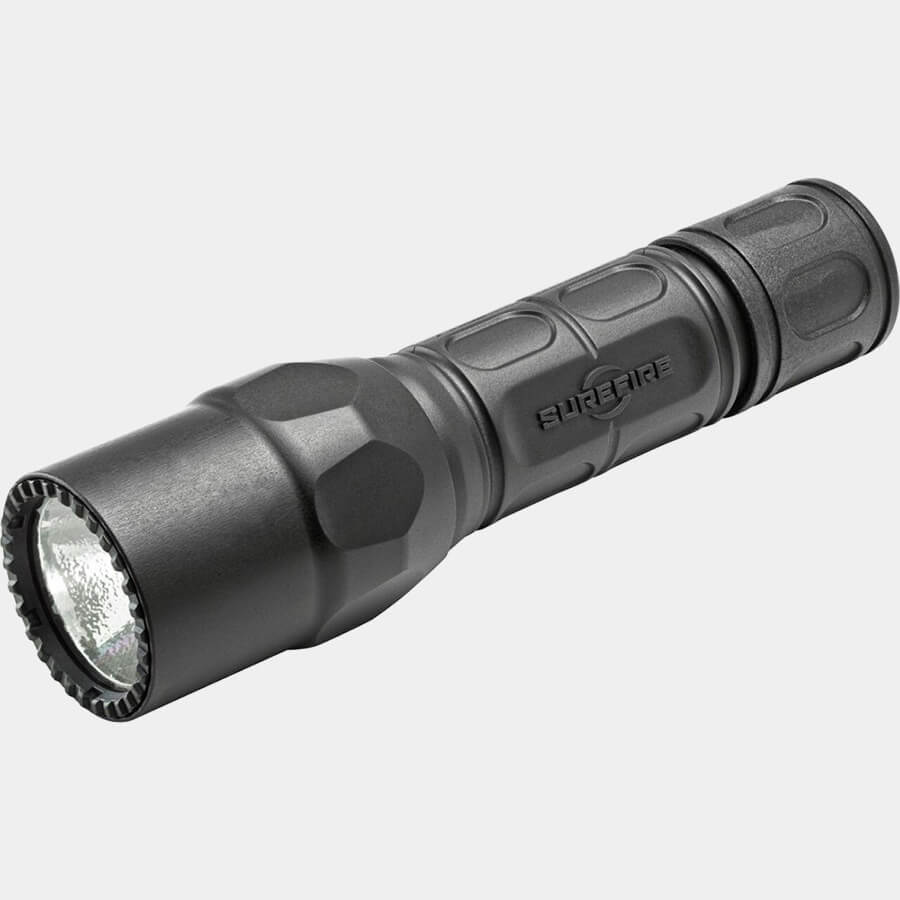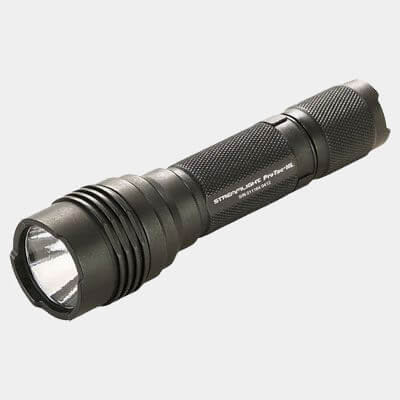Why You Need a Good Tactical Flashlight
November 26th, 2023
7 minute read
Seeing a threat is the first step in dealing with it. After all, if you never see the danger, how can you hope to defend yourself?
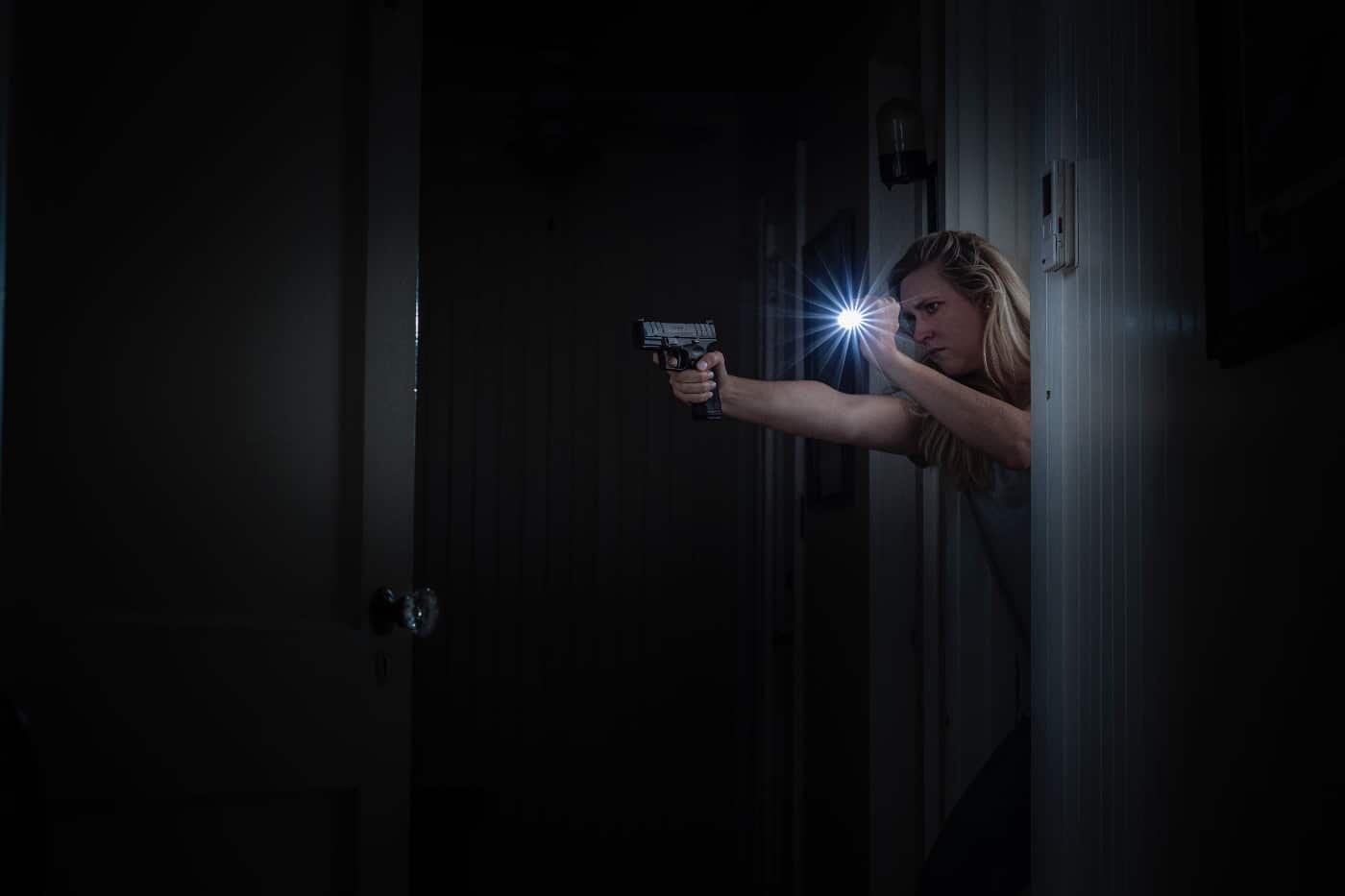
The common criminal prefers to hide in the shadows. Consequently, many violent attacks happen at night. It is imperative that you have a good flashlight designed with self-defense in mind. These kinds of flashlights are generally described as being tactical.
A tactical flashlight is more than just a marketing gimmick. A true tactical light will be rugged, bright and have controls compatible with firearms use. Let’s talk about what those things mean.
Quality Construction
The fable of the three pigs serves as a warning against buying cheap products when your life is on the line. Poor construction can mean water intrusion during a rain shower, a shattered lens or broken controls.
On most flashlight packaging, there will be two measurements of durability: impact resistance and water resistance.
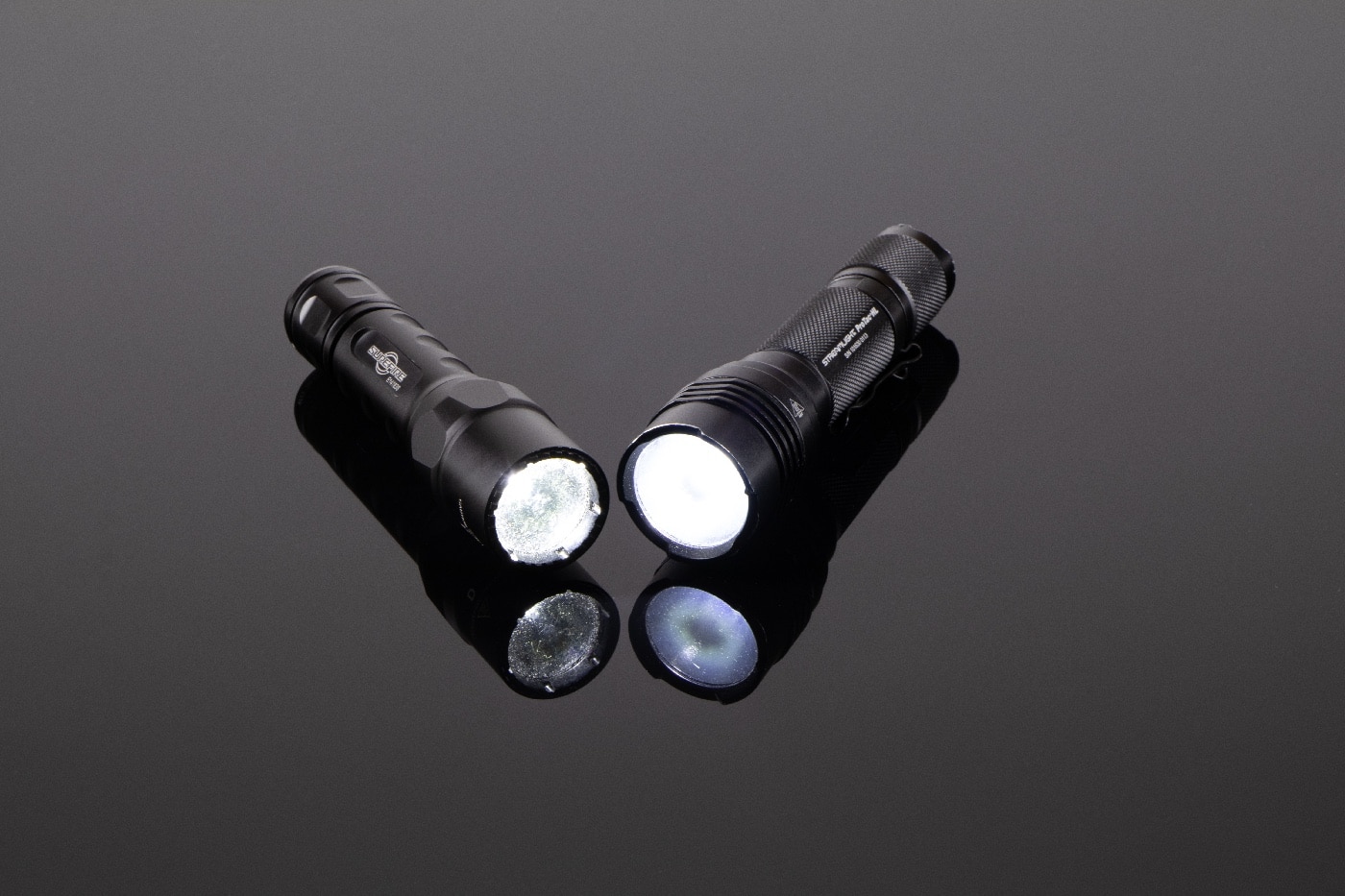
Impact resistance is typically measured in meters for how high a drop the light can survive. If the company adheres to the voluntary FL 1 standard for flashlights, the number will be rounded down to the nearest whole number. That test indicates that five sample flashlights each survived six drops onto cured concrete from the specified height.
If the company does not adhere to the voluntary FL 1 standard, the impact rating is meaningless as you have no idea if the testing was for multiple drops of multiple samples onto a hard surface or a single drop onto a feather pillow.
Not all lights that claim to adhere to the FL 1 standard actually follow it. If, for example, you see an impact resistance height of 1.5 meters, you know the company is not adhering to the standard and should be wary of any claims made about its durability. This is because the FL 1 standard requires that any distance be measured in whole numbers, rounded down. So 1.5 meters should be listed as 1 meter following the FL 1 standard.
Water resistance is most accurately described using an IP code. IP codes define the amount of particle and water intrusion the flashlight withstands. A code will often look like this: IP67, where “6” represents the amount of particle intrusion protection and the “7” indicates the amount of water intrusion protection the flashlight has. Often, an IP rating will be given for water only, and the first number will be replaced by the letter x.
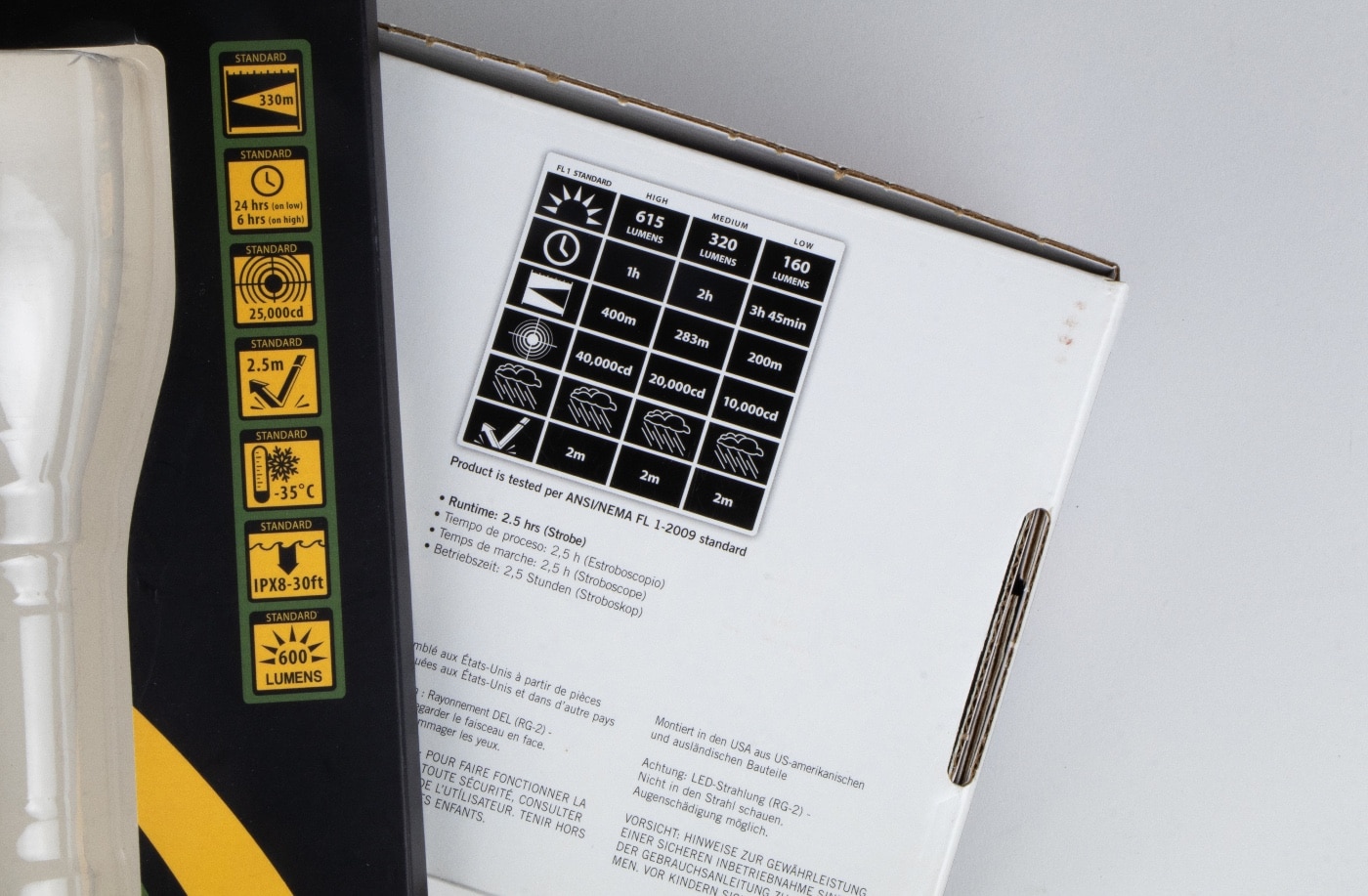
IPx1 through IPx6 are increasing levels of water resistance, but do not protect the flashlight against complete immersion. The IPx7 rating means the flashlight will withstand 30 minutes of submersion at 1 meter. IPx8 means the flashlight can be submerged at a depth greater that 1 meter.
The words “waterproof” and “water resistance” on flashlight packaging have no measurable meaning. Make sure you look for an IP rating for a true understanding of the water resistance you can expect.
Currently, there are no standards for measuring repeated impacts on flashlights when mounted to a weapon.
How Bright, and for How Long?
If you’ve been flashlight shopping lately, you’ve likely seen companies advertise flashlight specifications like lumens, candelas and runtime. But, what do each of these things measure?
Total light output of a flashlight is expressed as lumens. This represents all of the light coming out of a light from the center of the beam to the spill.
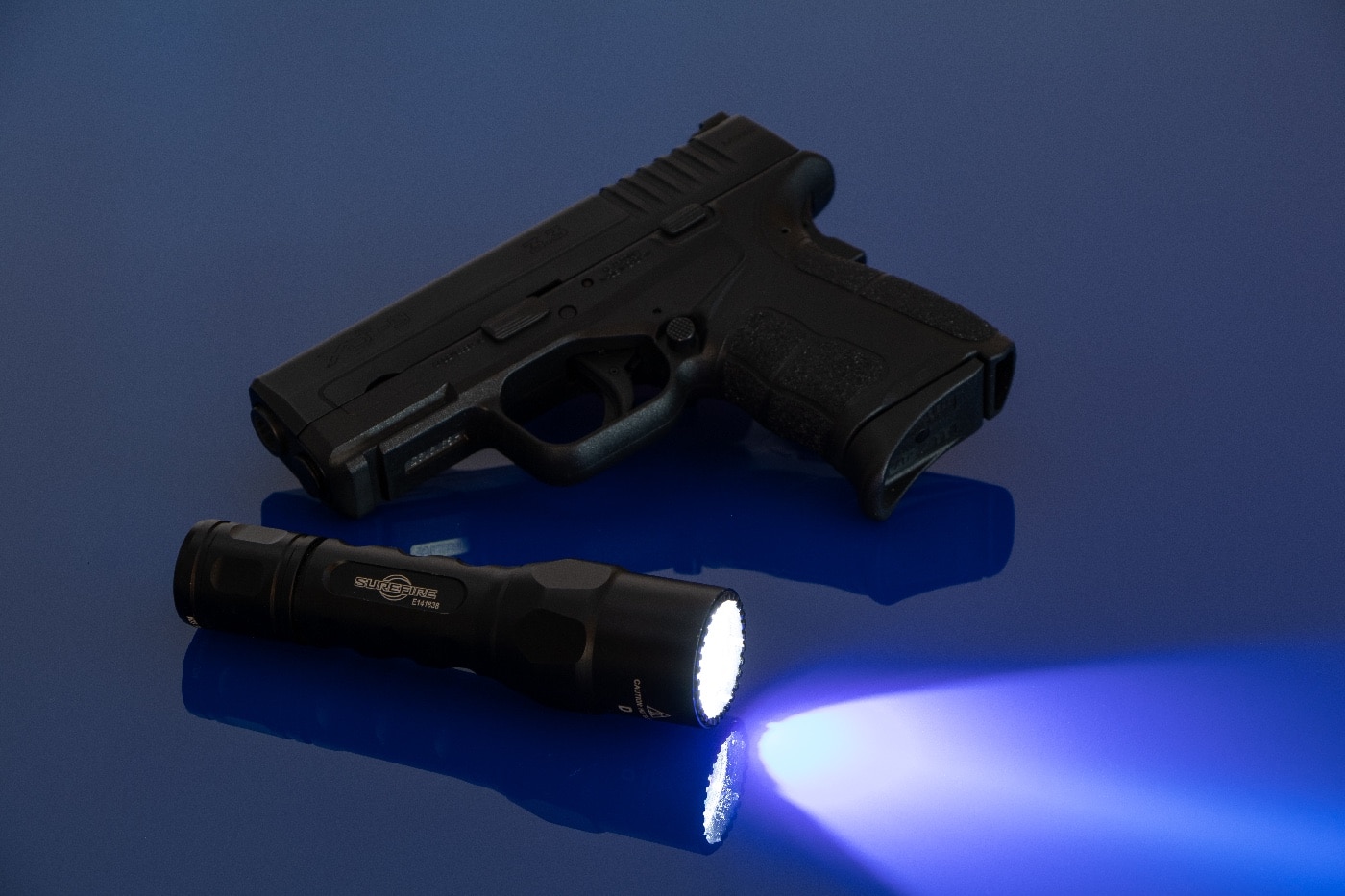
Peak beam intensity, or the brightness of the most concentrated portion of the flashlight output, is expressed in candelas.
Neither total light output (lumens) or peak beam intensity (candelas) are the best measurement of how much light a torch can throw. Rather, they work together to give you an idea of how much total light you can expect and what kind of beam you might get.
For example, a flashlight that has a total output of 1,000 lumens and a peak beam intensity of 10,000 candelas likely has a broad beam of light that can more evenly fill a room than a flashlight with 1,000 lumens and 35,000 candelas. Conversely, the 35,000 candelas flashlight would likely be better at illuminating someone across a field. Neither light is objectively better; rather, each light is better suited for different needs.
Runtime is a measurement that is heavily gamed by some flashlight manufacturers. Read this carefully: Runtime is not how long a flashlight will emit its rated output. Rather, runtime is supposed to measure the total time a flashlight emits “usable” light.
What is “useable” light varies depending on whom you ask. According to the FL 1 standards, that measurement is 10% of the initial output. For a 1,000 lumen light, that would be 100 lumens. If a manufacturer isn’t adhering to the FL 1 standard, maybe the number is even less.
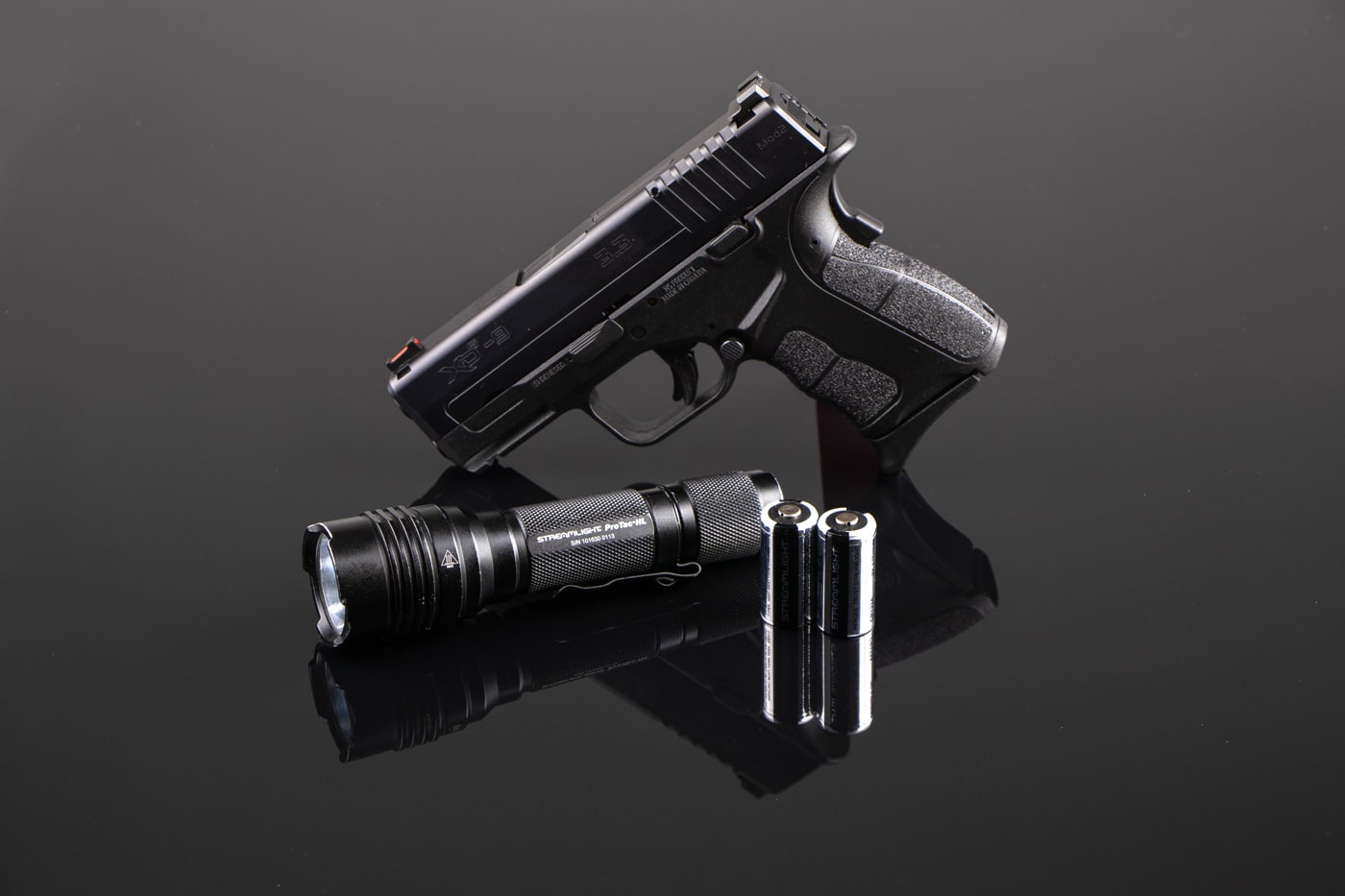
A manufacturer can report a runtime of two hours for a 1,000 lumen flashlight, even though the flashlight only emits 1,000 lumens for two minutes and then limps along at 110 lumens for the next 118 minutes.
In my experience, the best manufacturers maintain 50% or better of the flashlight’s initial output for most of the reported runtime. In my testing, I’ve seen that some of the best sellers at a major online retailer can’t even manage that.
Ease of Use
Ultimately, a flashlight needs to have controls that allow for instinctual use under stress. In my opinion, a quality defensive flashlight will have momentary and constant on options that are instantly available at the highest output settings.
Lower output settings and strobe modes are acceptable in a defensive flashlight, but they cannot interfere with the ability to instantly access the most powerful setting available.
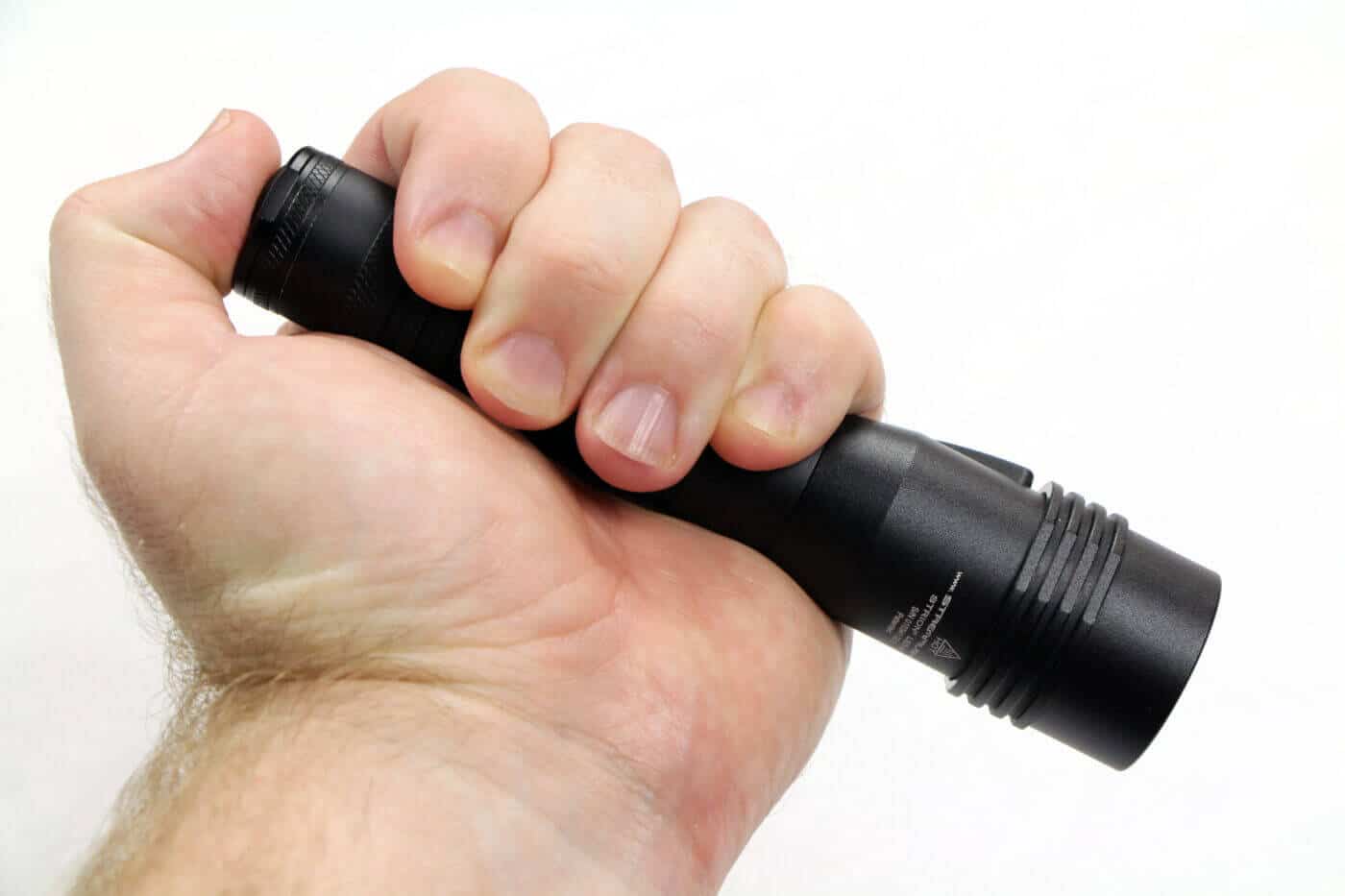
Some of the popular lights that are marketed as suitable for tactical use are better suited for hobbyists. Many of them have five or more output levels that require you to memorize multiple click combinations to locate the needed mode. They may be fun to play with, but they are not ideal for identifying and addressing an attacker.
For a defensive flashlight, I prefer a tailcap switch with options for a half-press and full press (click). With this type of switch, I expect the half-press to be momentary on mode at full output while the press to click is constant on at full brightness.
My Recommendations
For most self-defense purposes, I prefer a high lumen, moderate candela flashlight from a reputable manufacturer.
I’ve tested more than 100 handheld flashlights during the past 10 years. I’ve come to rely on Streamlight and SureFire products as durable lights that have actual outputs and runtimes that closely match their claims. Other companies offer good products, but I’ve not yet found another with the solid track record these two have.
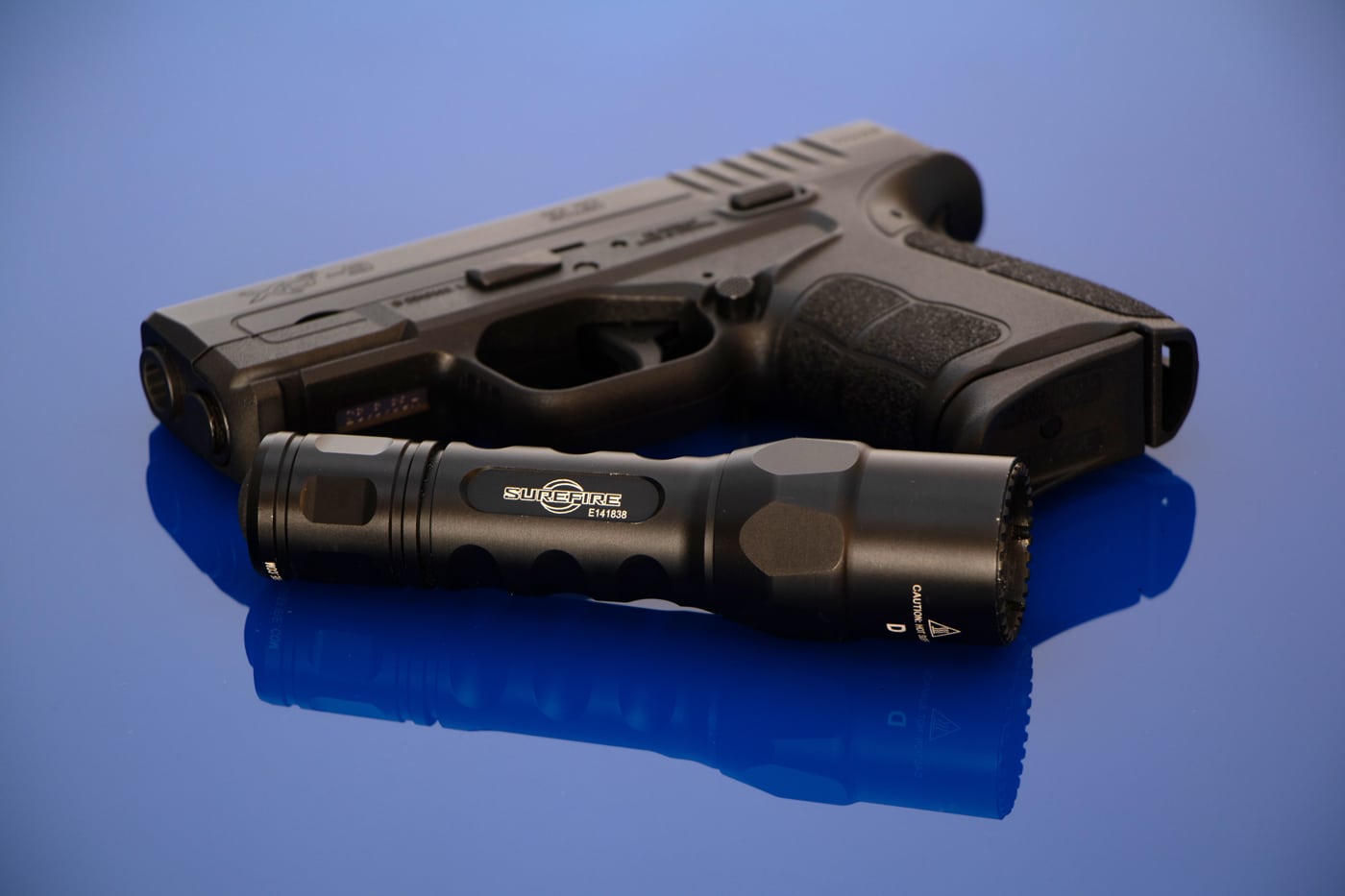
Currently, I carry the Surefire G2X Tactical flashlight daily. It runs on a pair of CR123A batteries and emits a rated 600 lumens. The beam pattern has a wide spread without a hot center. I’ve found it is excellent for room clearing and illuminating a car interior.
My testing shows the light maintains output in excess of 60% of its initial throw for more than an hour, which is significantly better than others I have tested.
Another good choice is the Streamlight ProTac HL. It is similar in size to the G2X Tactical, but with slightly more output and a moderately tighter beam. It is also good for room searches, but it has just enough cohesion to the center portion of the beam to offer more reach than the SureFire.
It is also powered by two CR123A batteries, though runtime isn’t quite as long. In my testing, output stays above 50% of initial output just shy of one hour.
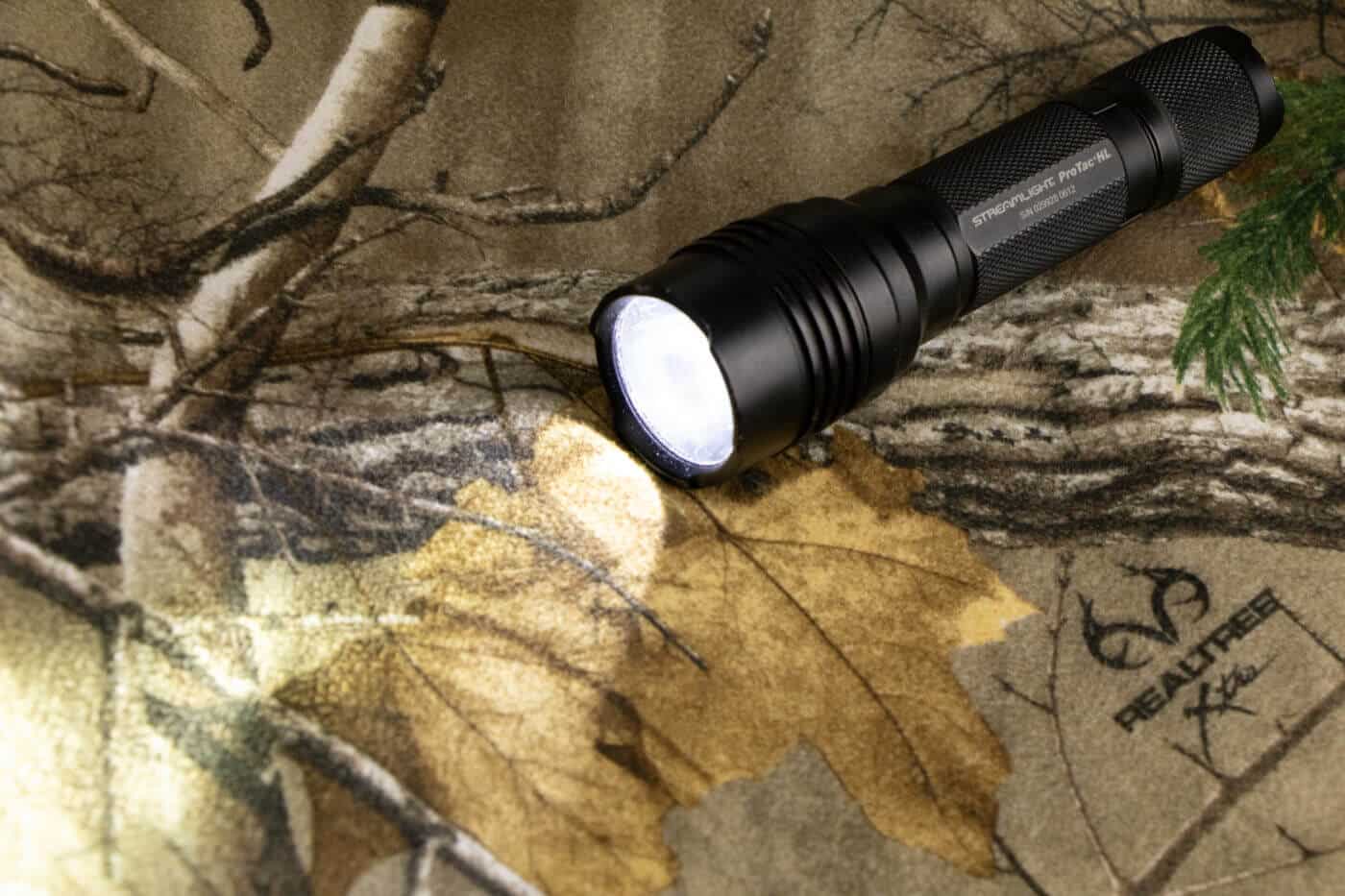
Until I started carrying the SureFire, I carried a ProTac HL in my pocket daily. Additionally, I carried a second one on my duty belt as a police officer at a busy Florida department where it was exposed to drops, rain, salt spray and oppressive humidity. I never once had a problem with either of the lights.
There are other good lights on the market. However, I urge you to employ skepticism when reviewing manufacturer claims. Flashlight sales appear to be a lucrative market and there are some unscrupulous people who exaggerate performance in an effort to part you from your money. Be aware, and make an informed decision.
Editor’s Note: Please be sure to check out The Armory Life Forum, where you can comment about our daily articles, as well as just talk guns and gear. Click the “Go To Forum Thread” link below to jump in and discuss this article and much more!
Join the Discussion
Featured in this article
Continue Reading
Did you enjoy this article?

 85
85




